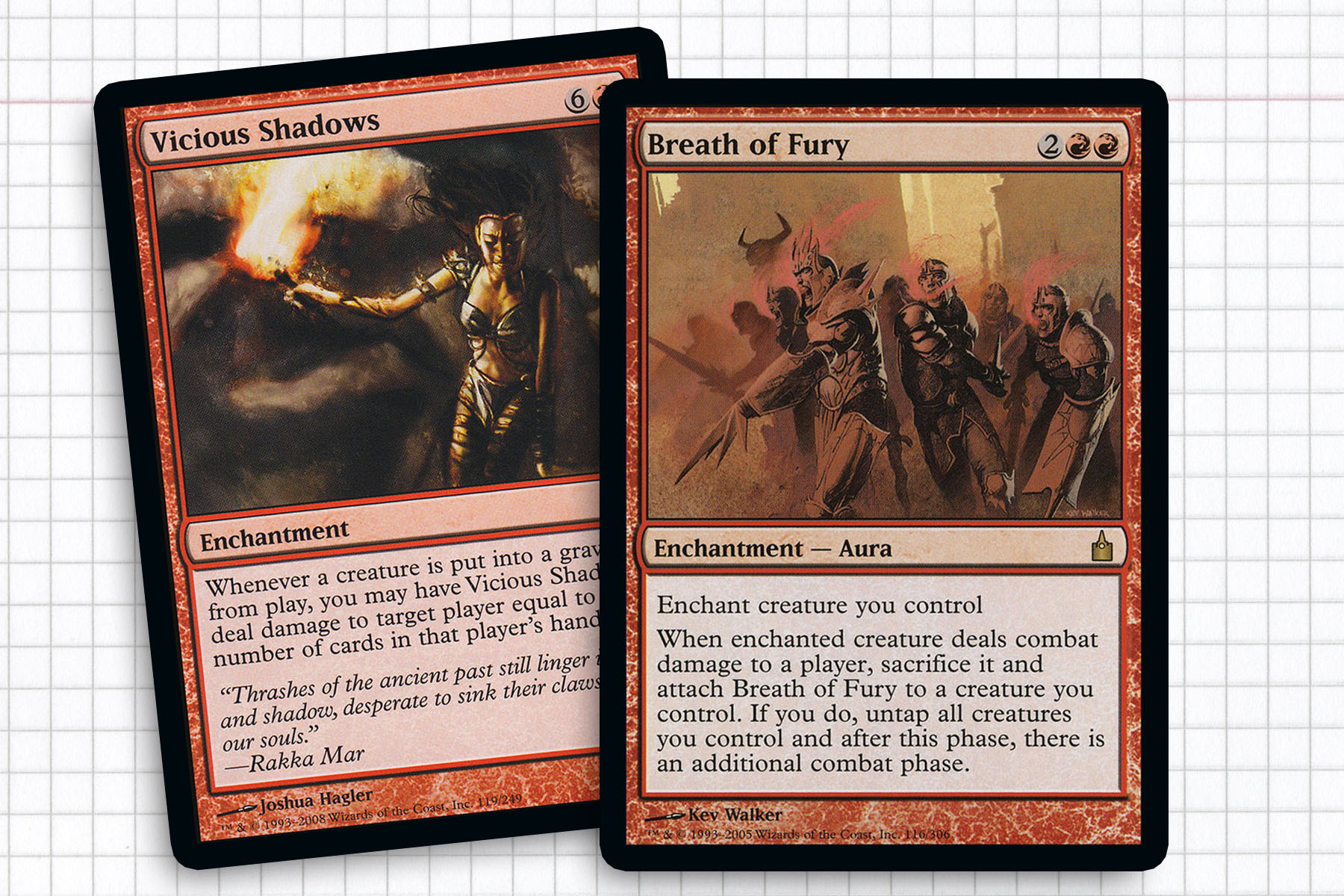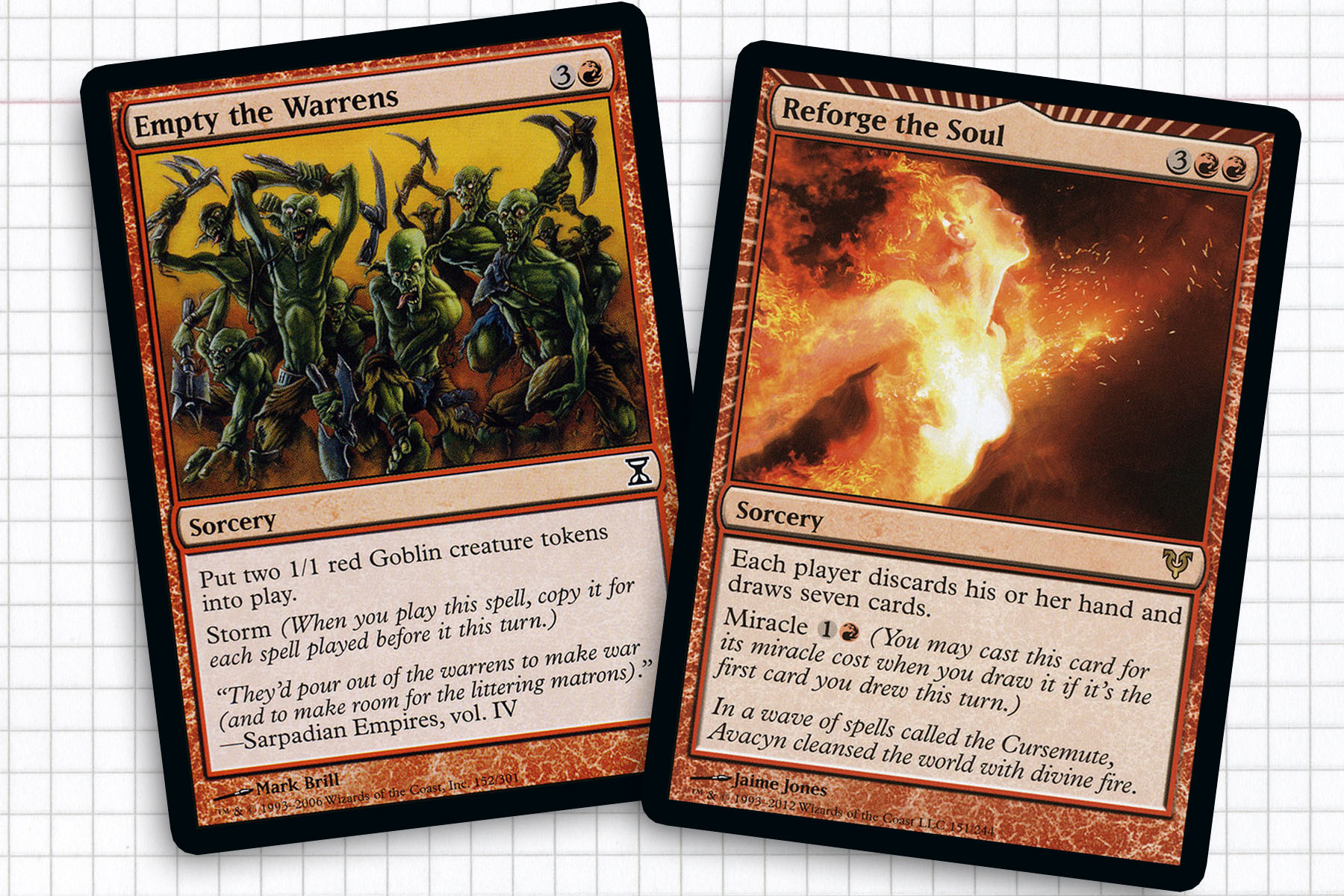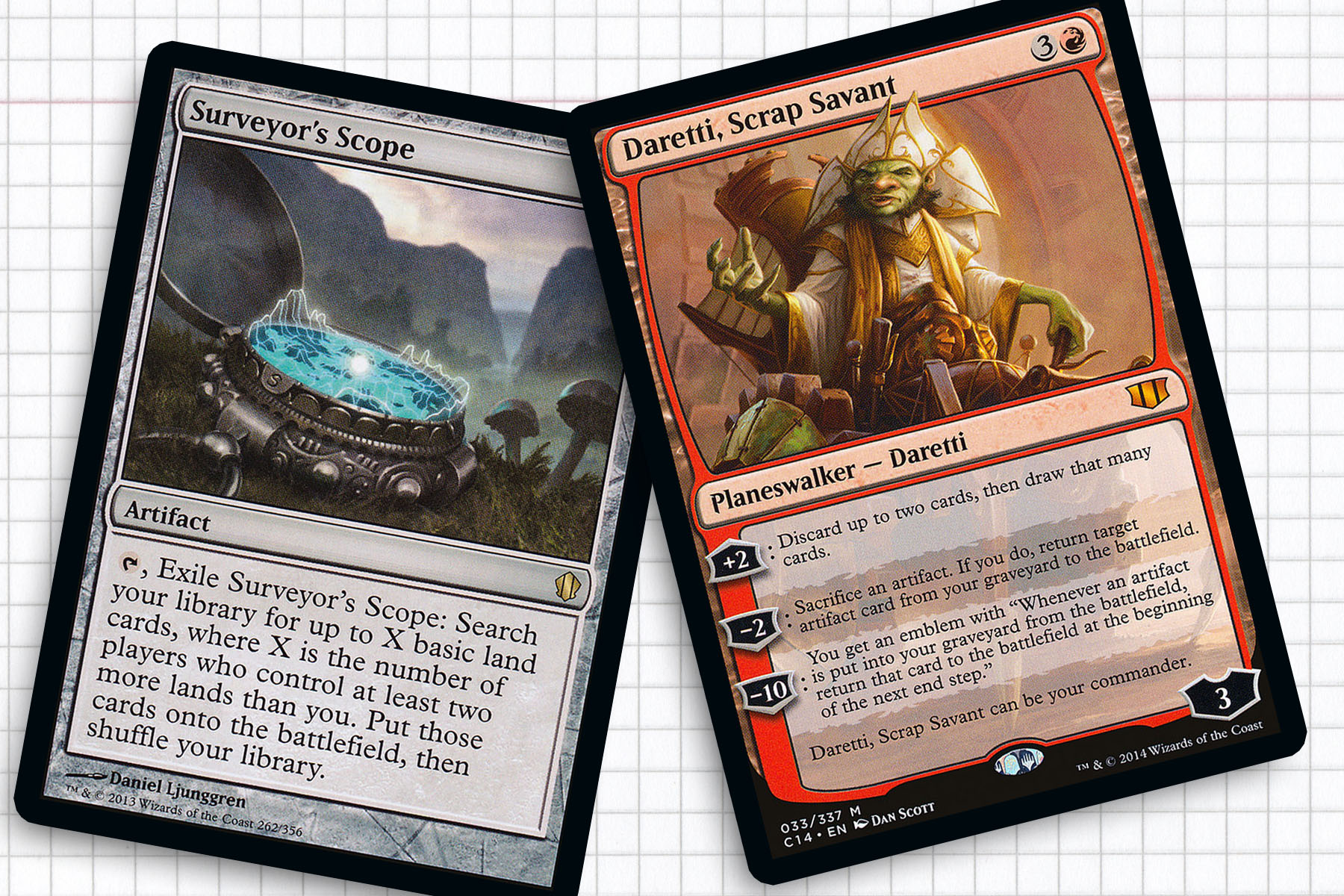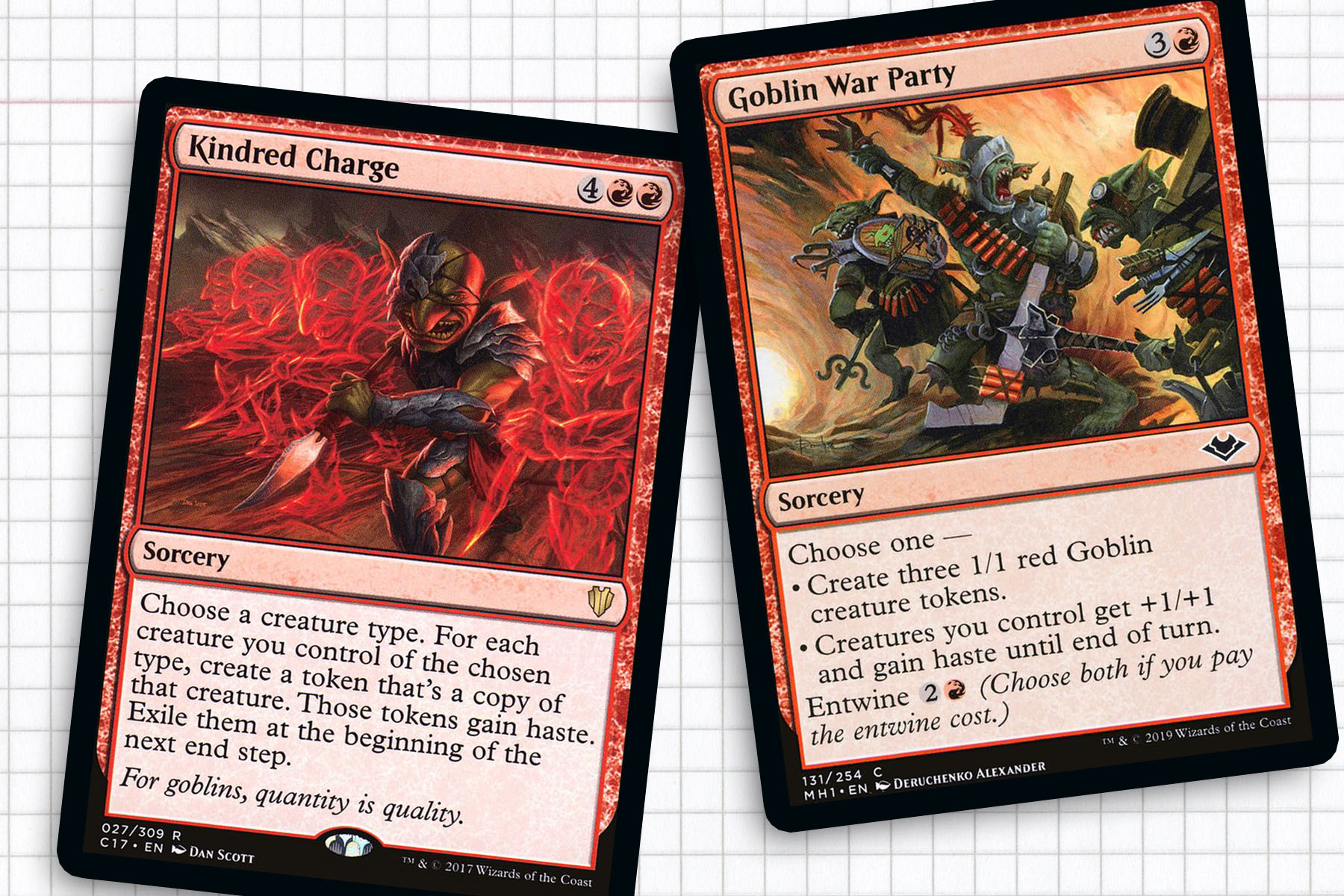As I look back on my Magic career, Commander has been my most consistent focus. While I haven’t hit a decade of experience with Commander yet, I’m very close to reaching that milestone. Biased as it might be, I think Commander is the best Magic format. But I don’t think I would have reached this point if I hadn’t been hooked by a deck that really spoke to my sensibilities.
I’ve talked in the past about the first deck I ever built from scratch, Ertai, the Corrupted, and I’ve alluded to my attempt to make Jhoira of the Ghitu into something palatable for my playgroup. But it was a funky green goblin named Ib Halfheart, Goblin Tactician that ultimately taught me what was possible in Commander.
Today, I would like to look at where the deck currently sits as it’s unfortunately outdated from a lack of attention, talk a little bit about what really makes the deck so fun and theorycraft about some of the cards that have come out in the last few years that just might be excellent options for the deck.

Ib Nation, Stand Up
The origins of this deck go back nearly a decade to an early 2010s podcast cleverly called Commander Cast. The show hit the internet airwaves with then-host, Andy. He used his sense of humor and a mix of critical thinking about Commander make me sit up and listen. Within the first year of the show he and his guest hosts jokingly got onto the topic of Ib Halfheart being a good card, until the lightbulb went off in Andy’s head and it became clear to him that there may actually be something of worth under the hood. His version of the deck eventually got a feature on CMDR Decks and would become the blueprint for my own take.
Listening to Andy talk about the deck was so enthralling. Even though it fought against my typical sensibilities, I was willing to give an all-in aggro deck a chance. Before Ib Halfheart, I wouldn’t have considered myself a player who would pick up an overly aggressive deck for competitive or casual play—I was far more passionate about combo and control decks. But as I was entering my current build into deckstats and reviewing Andy’s list, I remembered how much this deck plays as an explosive deck that uses Mountains as combo pieces to ultimately end games before anyone else is ready.
Overall, this deck really allowed me to have a lot of fun with cards I would have never thought much about. Cards entered my radar like Vicious Shadows and Shared Animosity, two ingenius pieces with Ib Halfheart, Goblin Tactician due to all the other goblins inevitably entering and leaving the battlefield. It made Breath of Fury go from being a bulk card I was frequently overlooking into a finisher card with more wins to its name than Cyclonic Rift.
But ultimately, what I really think Ib did well as a Commander card was create an overwhelming amount of choices for my opponents. Goblins aren’t that big, so they are usually easy to block; but when all those blocks turn into four damage on each blocking creature, suddenly not everything is so cut and dry. Because of all the fun I had with the deck, I eventually started evolving it to better fit my metagame and of course grow with each new set.

Fearless in the Face of Danger
For the many people who are new to Ib Halfheart, the deck is not subtle with what it is looking to do. We’re going wide with goblin tribal and we often go as far as to sacrifice all our lands in the name of victory. It can often leave you feeling like a mad scientist as you string together these weird boardstates where everything you have is expendable. But any wise opponent is going to know that Ib is the harbinger of the end game. Luckily, I know from experience that games can be won without having to cast our general. With some ingenuity Mana Echoes and Skirk Prospector can easily get you there.
Looking back on the “level-up” moments I had as a dove further into Magic, it’s funny to think that my understanding of card advantage barely preceded piloting this deck. Often this deck has some of its best moments when you ignore how badly you’re about to rip apart your hand with Wheel of Fate, Reforge the Soul, or Molten Psyche. The first dozen or so games it felt really bad trying to justify discarding combo pieces like Empty the Warrens or Mana Echoes to a Wheel-effect, until I realized that the card disadvantage I might be giving myself was nothing compared to how it destabilized my unexpecting opponents. By attacking my opponents with crazy piles of goblin tokens and disorienting their hands at the same time, I was presenting a board that needed answering and also making answers harder to keep track of. That mentality became a badge of honor every time I played with this deck.

Making it Mine
As time went on and Commander grew in popularity, Wizards gave mono-colored decks more staples to stay competitively viable. All those possible staples allowed me to slowly take what Andy had built and start to make it mine. Cards like Warbreak Trumpeter and Tuktuk the Explorer didn’t really advance what I was looking to do; and as much as I love Chandra Ablaze, she’s slowly become less relevant. Also, this deck had at one point run Ruination, but it was removed as a concession to my friends and to make room for other synergistic cards.
I’ve praised Surveyor’s Scope in the past, but this was the deck where I first added it. Since we so often would sacrifice mountains for surprise goblins, the Scope left me with a back up plan in the event that I was unable to close out the game according to schedule. Additionally, Treasonous Ogre would play a similar role, allowing me to have some access to mana, even with no lands. But I think it might have been the printing of Daretti, Scrap Savant that did the most for this deck in the middling years.
Before Wizards played around more and more with ways for Red to have “impulsive draw,” Daretti crept in and offered Red the card advantage usually seen with Blue. Additionally, this deck plays rather high amount of artifacts in spite of the fact that our general doesn’t interact with them at all. And of course, Daretti can come down and fix any artifact issues we might be facing.

The Glorious Future of Ib
For a deck that has been near and dear to my heart for the last seven or eight years, I haven’t gotten much mileage out of the deck as of late. Looking it over, I’m not sure why I never got around to adding a copy of Kindred Charge or why I still have Crater’s Claws or Crystal Ball still kicking around. I think part of the stagnation comes down to the fact that no new tools have jumped out at me in the last year, with only Goblin War Party and Pashalik Mons fitting well with my theme.
As card selection goes, I know what a few of my readers must be screaming into their computers or smartphones: “Ryan, Dockside Extortionist exists.” But I strangely don’t know if that would be very helpful for the deck, as we are trying to win most games before other players have time to set up much of a board presence. That said, I’ve made a case for Treasonous Ogre and maybe the Extortionist fills a similar role—but my gut disagrees with that thought.
I know that some of what keeps this deck eternally in my deck box when I head out to game night is nostalgia. That a strong case could be made for Krenko, Mob Boss to be the more optimal goblin tribal general. While I would not stop anyone from exploring Krenko, I believe he is too slow unless you are mulliganing for Thornbite Staff. Either way, mono red has been in a weird place since the printing of Purphoros, God of the Forge invalidated a lot of what go-wide generals could do.
Next week, I have something special tied in with Master of Magic and many other creators for Halloween. So look out for that and I will see you then.
Ryan Sainio is a Graphic Designer who writes about EDH and the EDH community. He has been playing Magic: The Gathering since 7th Edition in 2002 and values flavorful and fun gameplay over competitively optimized decks.

